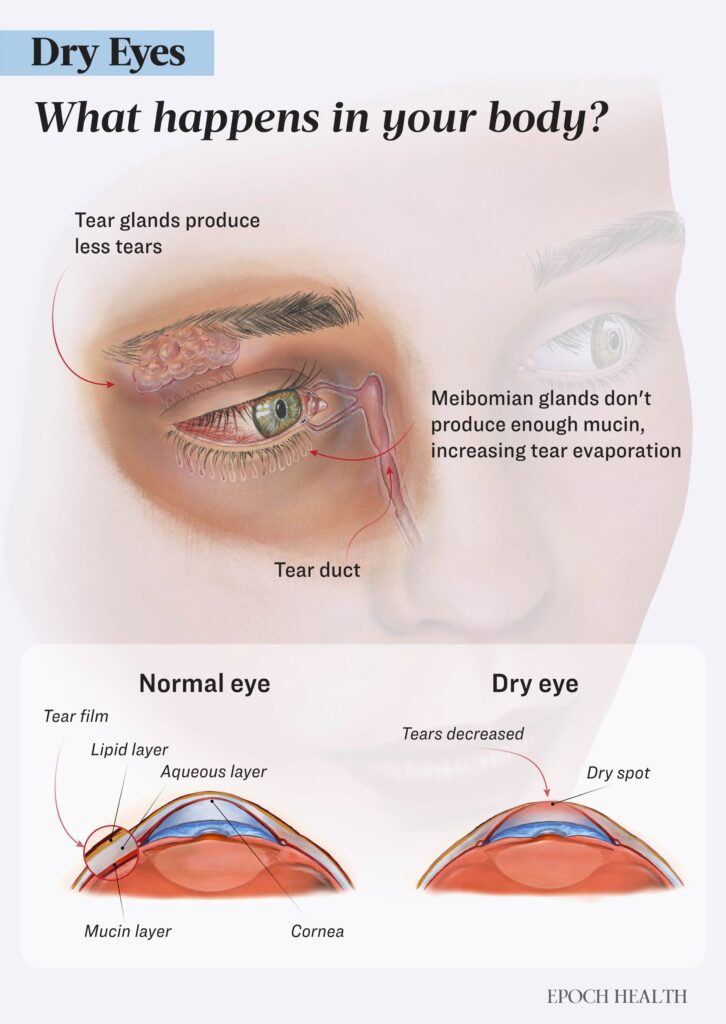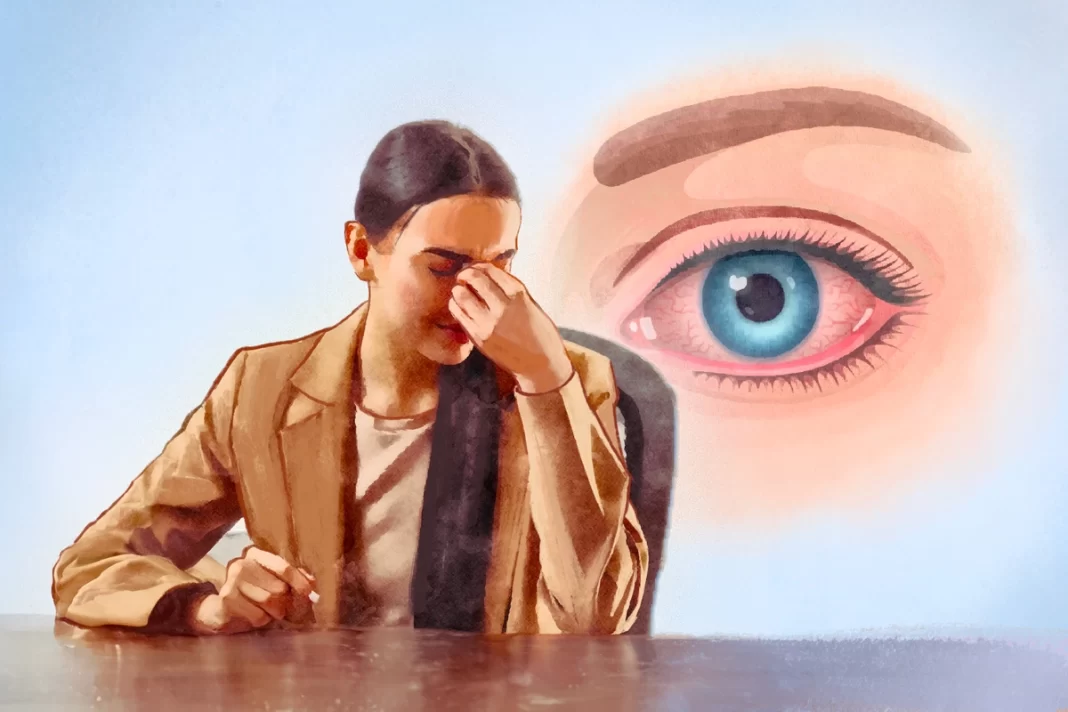Dry eye syndrome affects millions of Americans every year.
Dry eye, also known as dry eye syndrome and keratoconjunctivitis sicca (chronic dry eye), is a common condition affecting nearly 16.4 million Americans, or about 6.8 percent of the U.S. adult population. It occurs when the eyes don’t produce enough tears or when the tears don’t function properly, leading to dryness, irritation, and discomfort.

What Are the Symptoms and Early Signs of Dry Eye?
Symptoms of dry eye can vary in intensity and frequency. They often worsen during activities that require prolonged focus, such as reading, working on a computer, or watching television. While some people experience mild discomfort, others may have more persistent irritation.
Common Sensations and Discomfort
Many people with dry eyes describe a gritty, burning, or stinging sensation in their eyes as if something is stuck inside. Some also experience pressure behind the eyes or sharp, stabbing pain. A heavy feeling in the eyelids or difficulty keeping the eyes open can also occur, especially after prolonged use of screens.
Vision-Related Symptoms
Blurred vision—particularly when it fluctuates—can be an early sign of dry eye. Sensitivity to light is also common and may make it uncomfortable to be in bright environments. Frequent blinking or excessive tearing can paradoxically signal dryness, as the eyes may produce extra tears in response to irritation.
Changes in Eyelids and Tear Production
Dry eye can also affect the eyelids, leading to eyelid twitching, inflammation, or a lack of tears when crying. Some people may notice crusting or clumping of the eyelashes, particularly upon waking.
Additional Symptoms
Redness is a common sign of dry eye and may worsen with certain over-the-counter eye drops, which temporarily shrink blood vessels to reduce redness. However, once the effect wears off, the redness can return even stronger. Many people also experience discomfort while using digital devices, as prolonged screen time reduces blinking, which can increase dryness and irritation.
What Causes Dry Eye?
Tears are essential for keeping the eyes moist, removing particles, and ensuring clear vision. Dry eye syndrome has two main causes: insufficient tear production and rapid tear evaporation. These issues occur when the eyes can’t maintain a healthy tear film.
By Mercura Wang







